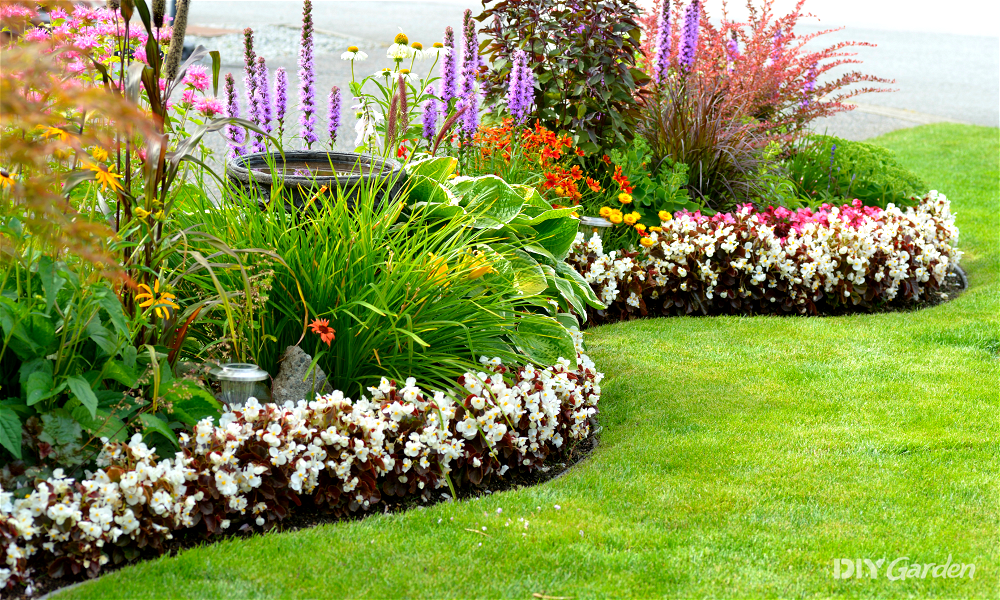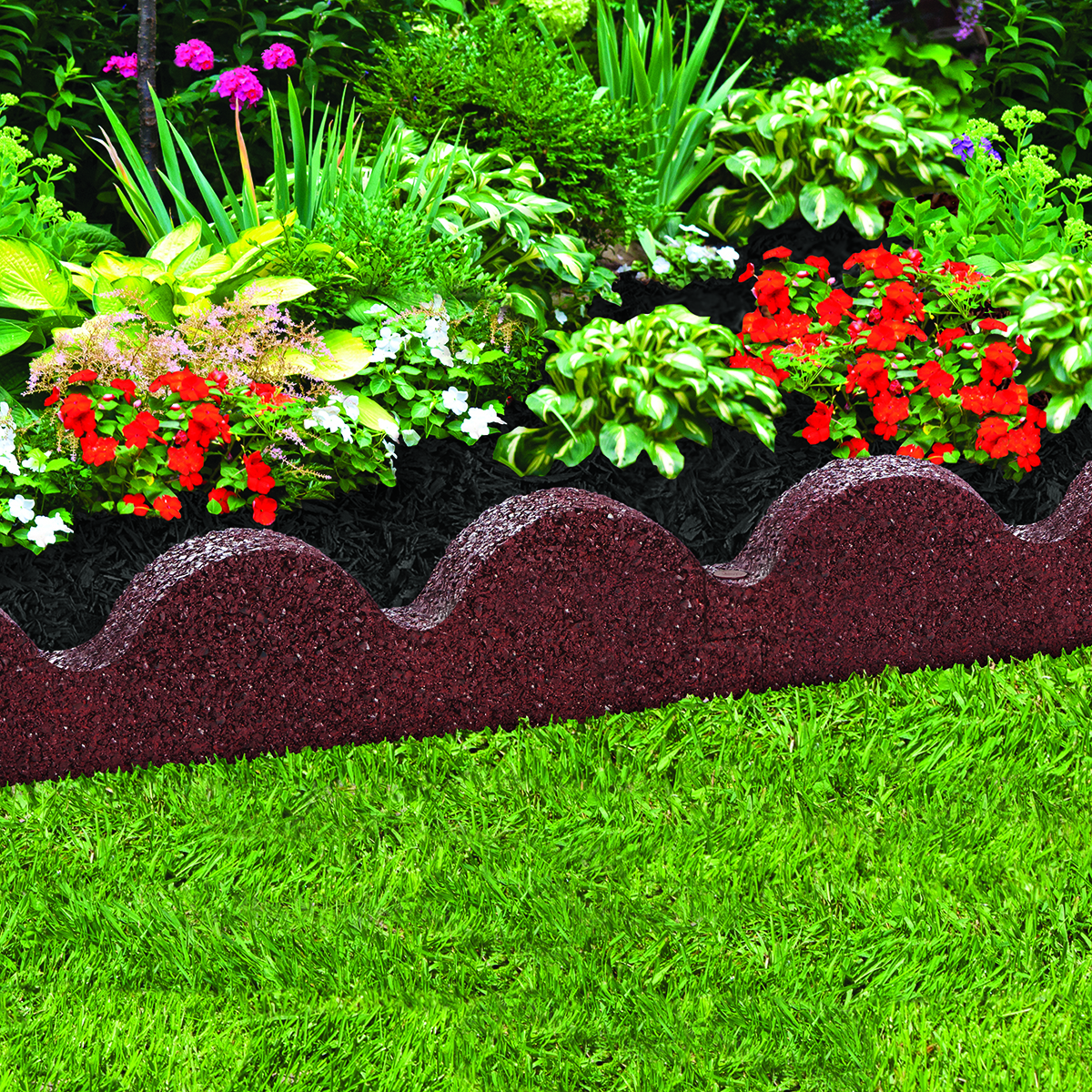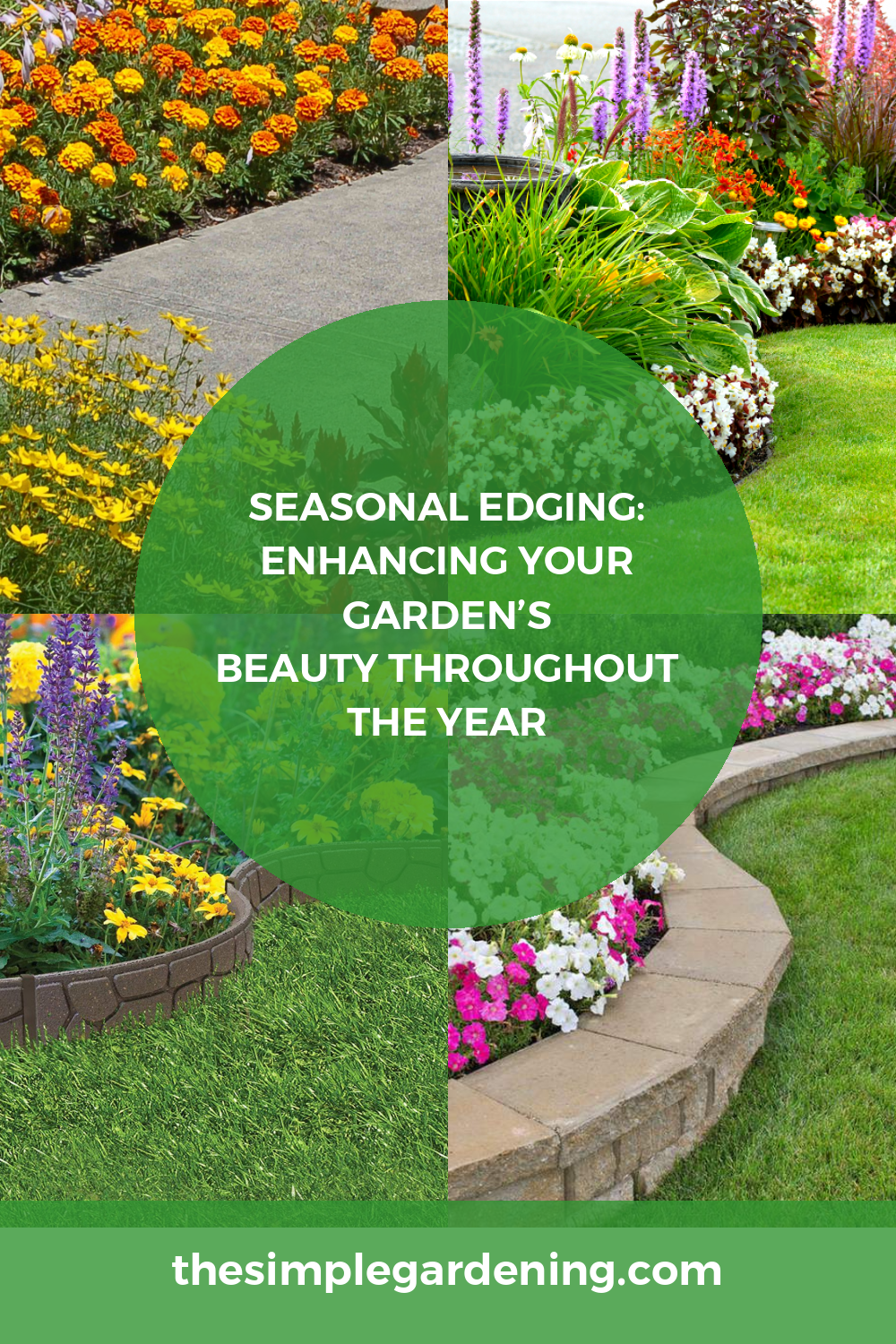Seasonal edging is a crucial aspect of maintaining a vibrant and healthy garden throughout the year. It involves creating borders or boundaries around garden beds, pathways, and other landscaping features to enhance their appearance and functionality. Edging plays a vital role in defining garden spaces, preventing weed growth, and controlling soil erosion. Whether you’re a seasoned gardener or a novice enthusiast, understanding the principles of seasonal edging can elevate your gardening experience to new heights.
Benefits of Seasonal Edging
Seasonal edging offers a myriad of benefits that contribute to the overall health and beauty of your garden:
| Benefits | Details |
|---|---|
| Enhancing Garden Aesthetics | Well-defined borders add structure and visual appeal to your garden, creating a polished look. |
| Weed Prevention | Edging creates barriers that help prevent invasive weeds from encroaching on garden beds. |
| Soil Erosion Control | By containing soil within designated areas, edging helps prevent erosion, especially on slopes. |
:max_bytes(150000):strip_icc()/edging-plants-for-walkway-big-57e54c983df78c690f785ac0.jpg)
Source Image: www.thespruce.com
Types of Edging Materials
Various materials can be used for edging, each offering unique advantages in terms of durability, aesthetics, and cost:
| Materials | Description |
|---|---|
| Stone or Brick | Natural stone or brick edging provides a classic and durable option that complements many garden styles. |
| Wood | Wooden edging offers versatility and a rustic charm, but it may require more maintenance over time. |
| Metal | Metal edging, such as steel or aluminum, offers a sleek and modern look with excellent longevity. |
| Plastic or Rubber | Plastic or rubber edging is affordable, flexible, and easy to install, making it ideal for DIY projects. |
Choosing the Right Edging Material
When selecting edging materials, consider factors such as climate, budget, and aesthetic preferences:
| Considerations | Details |
|---|---|
| Climate Considerations | Choose materials that can withstand the climate conditions in your area, such as extreme heat or cold. |
| Budget Constraints | Determine your budget for edging projects and explore options that offer the best value for money. |
| Aesthetic Preferences | Select materials that complement your garden’s style and theme, whether it’s formal, rustic, or modern. |

Source Image: sayngon.com
Tools Needed for Seasonal Edging
To effectively install and maintain edging in your garden, you’ll need the following tools:
| Tools | Description |
|---|---|
| Spade or Edging Shovel | Used for digging trenches and shaping edges with precision. |
| Level | Ensures that the edging is installed evenly and at the desired height. |
| Hammer | Helps secure edging materials in place, especially for harder surfaces like stone or metal. |
| Protective Gear | Wear gloves, goggles, and sturdy footwear to protect yourself from sharp edges and debris. |
Preparing the Garden for Edging
Before installing edging, it’s essential to prepare your garden beds and pathways:
- Clearing Debris: Remove any debris, such as rocks, weeds, or old edging materials, from the area where you plan to install new edging.
- Marking the Edging Lines: Use stakes and string to outline the desired shape and boundaries of your garden beds or pathways.
- Removing Existing Edging: If there’s old or damaged edging in place, carefully remove it to make way for the new edging installation.

Source Image: www.pinterest.com
Installing Edging
Proper installation is key to the effectiveness and longevity of your edging:
- Digging the Trench: Use a spade or edging shovel to dig a trench along the marked lines, ensuring it’s deep enough to accommodate the edging material.
- Placing the Edging Material: Place the chosen edging material into the trench, ensuring it sits flush with the surrounding soil and forms a tight boundary.
- Securing the Edging in Place: Use a hammer to drive stakes or anchors into the ground at regular intervals along the length of the edging, securing it firmly in place.
Edging Techniques for Different Seasons
Adapting your edging techniques to suit the changing seasons can help maintain the health and appearance of your garden year-round:
Spring: Preparing for New Growth
- Clean up garden beds and refresh mulch to prepare for spring blooms.
- Trim back any overgrown vegetation to create clean, defined edges.
Summer: Managing Growth and Heat Stress
- Regularly trim and maintain edging to prevent overgrowth and maintain clean lines.
- Consider heat-resistant edging materials, such as metal or stone, to withstand summer temperatures.
Autumn: Preparing for Winter
- Clear leaves and debris from garden beds and pathways to prevent them from accumulating along the edging.
- Apply a fresh layer of mulch to insulate soil and protect plant roots during winter.
Winter: Protecting Garden Beds
- Check edging for any damage caused by freezing temperatures or snow accumulation.
- Consider temporary protective measures, such as burlap wraps or snow fences, to shield vulnerable plants and edging.
:max_bytes(150000):strip_icc()/Stratosphere-5ab7e7d63418c600368a1c86-5b2d07dba474be00368e3428.jpg)
Source Image: www.thespruce.com
Maintaining Edging Throughout the Seasons
Regular maintenance is essential to keep your edging looking its best and functioning effectively:
- Regular Inspections: Periodically check the condition of your edging, looking for signs of damage, shifting, or wear.
- Repairing Damaged Edging: Promptly address any issues, such as cracks, breaks, or loose sections, to prevent further damage.
- Replacing Worn-Out Materials: As edging materials age, they may become brittle or worn. Replace damaged or deteriorated sections as needed to maintain structural integrity.
Creative Edging Ideas
Injecting creativity into your edging design can elevate the visual appeal of your garden:
- Curved Edges for a Natural Look: Create flowing, organic shapes to mimic the contours of nature and soften hard lines.
- Incorporating Plants into the Edging: Use low-growing plants or groundcovers along the edge of garden beds for a seamless transition between landscaping elements.
- Using Recycled Materials: Explore eco-friendly options, such as recycled glass, plastic bottles, or reclaimed wood, to add unique character to your garden while reducing environmental impact.
Edging for Specific Garden Features
Tailoring your edging to suit specific garden features can enhance their functionality and aesthetics:
- Flower Beds: Frame flower beds with decorative edging to highlight blooms and prevent soil erosion.
- Vegetable Gardens: Install raised edging around vegetable beds to create defined boundaries and protect plants from trampling.
- Pathways and Walkways: Edge pathways with durable materials, such as stone or brick, to delineate walking areas and prevent grass encroachment.
- Water Features: Use water-resistant edging materials, such as concrete or metal, to create borders around ponds, fountains, or water gardens.

Source Image: zyhomy.com
Edging to Enhance Seasonal Themes
Embracing seasonal themes in your edging design can create a dynamic and ever-changing landscape:
- Spring: Incorporating Pastels and Florals: Choose edging materials and plants that reflect the vibrant colors and delicate blooms of spring, such as pastel-colored stones or flower-shaped metal edging.
- Summer: Vibrant Colors and Lush Foliage: Opt for bold and eye-catching edging materials, like brightly painted wood or tropical plants, to capture the energy and abundance of summer.
- Autumn: Warm Tones and Rustic Elements: Embrace the cozy charm of fall by using earthy materials such as weathered wood or decorative pumpkins to create rustic edging that complements the season’s rich hues.
- Winter: Evergreens and Festive Accents: Incorporate evergreen shrubs or garlands along the edging to add a touch of greenery and festive cheer to your garden during the winter months.

Source Image: imcoutdoorliving.com
Edging for Different Garden Styles
Matching your edging to the overall style of your garden can enhance its cohesiveness and visual appeal:
- Formal Gardens: Choose elegant and symmetrical edging materials such as trimmed hedges or cast iron borders to complement the structured layout of formal gardens.
- Cottage Gardens: Embrace a more whimsical and romantic feel with informal edging options like wattle fencing or meandering paths lined with wildflowers.
- Contemporary Gardens: Opt for sleek and minimalist edging designs such as stainless steel strips or concrete borders to complement the clean lines and modern aesthetics of contemporary gardens.
- Xeriscapes: Select drought-tolerant edging materials like gravel or succulents that blend seamlessly with the low-maintenance and water-efficient principles of xeriscape gardening.

Source Image: www.canadiantire.ca
Seasonal Edging
Troubleshooting Common Edging Issues
Addressing common edging problems promptly can help maintain the integrity and functionality of your garden:
| Issues | Solutions |
|---|---|
| Edging Material Shifting | Use sturdy stakes or anchors to secure edging in place, and periodically check for any signs of movement or shifting. |
| Weed Growth Along the Edging | Apply a weed barrier fabric underneath the edging, or regularly remove weeds by hand to prevent them from spreading. |
| Water Pooling Near Edging | Ensure proper drainage by creating a slight slope away from the edging, or install drainage channels to redirect water flow. |
Maximizing Seasonal Beauty Through Edging
In conclusion, seasonal edging is a versatile and essential aspect of gardening that allows you to enhance the beauty and functionality of your outdoor space throughout the year. By choosing the right materials, techniques, and designs, you can create visually stunning borders that not only define garden spaces but also contribute to weed prevention, soil erosion control, and overall garden health. Remember to adapt your edging strategies to suit the changing seasons, and don’t hesitate to get creative with your designs to reflect your unique style and preferences. With proper maintenance and care, your garden edging will continue to delight and inspire you season after season.

Source Image: easydecor101.com

